Iglesia de Nuestra Señora del Perpetuo Socorro
Authors
Abstract
El presente trabajo forma parte de la serie monográfica que tiene como tema la Arquitectura Religiosa de Valparaíso, patrocinada por el Departamento de Arquitectura y Urbanismo de la Facultad de Arte y Tecnología, de la Sede Porteña de la Universidad de Chile. La obra del mencionado Departamento resulta en nuestro medio profundamente estimulante ya que plantea tanto en el orden histórico como en el metodológico importante problemas y perspectivas. Es especialmente significativa su participación en una serie de trabajos relacionados con la conservación de los bienes culturales de la ciudad, en el bien entendido que, la creación arquitectónica está profundamente vinculada -sobre una base cierta y cada vez más amplia- a nuestro proceso histórico. Desde el punto de vista metodológico esta labor se desarrolla a través de una investigación que aspira a formar en el alumno un método de pensamiento que le permita enfocar e interpretar la realidad por si mismo y racionalmente. En este sentido se siguió un método de trabajo que permitió establecer la historia de la Iglesia, avalada oportunamente con material inédito y bibliográfico, en tanto que, se efectuaba el levantamiento que permitiría obtener los correspondientes planos del edificio. Este criterio metodológico permitió la interpretación integral del hecho arquitectónico, tanto en las motivaciones histórico-culturales como en sus aspectos formales y espaciales. La Iglesia de Nuestra Señora del Perpetuo Socorro es en gran medida representativa de su época, muchos factores de su gestación, programa arquitectónico y materialización aparecen fuertemente vinculados a ese periodo híbrido de fines de siglo pasado y comienzos del presente. Comprenderlo implicó ver la ciudad, sus calles y edificios, de una manera distinta. Aunque este edificio no tenga valores arquitectónicos notables, valores artísticos notables, tiene una historia, una tradición, mejor aún, ha conquistado un lugar en el cerro y su gente. Por desgracia, somos los chilenos en general inconscientes de nuestro ser nacional, más aún se diría que admiramos lo opuesto a nuestra manera de ser. Somos admiradores de lo grande en este país de pequeñas cosas.
This work is part of a monographic series on the Religious Architecture of Valparaíso, sponsored by the Department of Architecture and Urbanism of the Faculty of Art and Technology of the University of Chile's Valparaíso campus. The work of the aforementioned department is deeply stimulating in our environment, as it raises important problems and perspectives both in the historical and methodological order. Its participation in a series of projects related to the conservation of the city's cultural assets is especially significant, given that architectural creation is deeply linked -on a firm and increasingly broad basis- to our historical process. From a methodological point of view, this work is carried out through research that aspires to form in the student a method of thought that allows them to focus on and interpret reality for themselves and rationally. In this sense, a working method was followed that allowed the establishment of the history of the church, supported by previously unpublished and bibliographic material, while the survey was carried out that would allow the corresponding plans of the building to be obtained. This methodological criterion allowed the integral interpretation of the architectural fact, both in its historical-cultural motivations and in its formal and spatial aspects. The Church of Our Lady of Perpetual Help is largely representative of its time, many factors of its gestation, architectural program and materialization appear strongly linked to that hybrid period of the late 19th century and early 20th century. Understanding it implied seeing the city, its streets and buildings, in a different way. Although this building does not have notable architectural values, notable artistic values, it has a history, a tradition, and better yet, it has conquered a place in the hill and its people. Unfortunately, Chileans in general are unconscious of our national being, even more so, it would be said that we admire the opposite of our way of being. We are admirers of the great in this country of small things.
This work is part of a monographic series on the Religious Architecture of Valparaíso, sponsored by the Department of Architecture and Urbanism of the Faculty of Art and Technology of the University of Chile's Valparaíso campus. The work of the aforementioned department is deeply stimulating in our environment, as it raises important problems and perspectives both in the historical and methodological order. Its participation in a series of projects related to the conservation of the city's cultural assets is especially significant, given that architectural creation is deeply linked -on a firm and increasingly broad basis- to our historical process. From a methodological point of view, this work is carried out through research that aspires to form in the student a method of thought that allows them to focus on and interpret reality for themselves and rationally. In this sense, a working method was followed that allowed the establishment of the history of the church, supported by previously unpublished and bibliographic material, while the survey was carried out that would allow the corresponding plans of the building to be obtained. This methodological criterion allowed the integral interpretation of the architectural fact, both in its historical-cultural motivations and in its formal and spatial aspects. The Church of Our Lady of Perpetual Help is largely representative of its time, many factors of its gestation, architectural program and materialization appear strongly linked to that hybrid period of the late 19th century and early 20th century. Understanding it implied seeing the city, its streets and buildings, in a different way. Although this building does not have notable architectural values, notable artistic values, it has a history, a tradition, and better yet, it has conquered a place in the hill and its people. Unfortunately, Chileans in general are unconscious of our national being, even more so, it would be said that we admire the opposite of our way of being. We are admirers of the great in this country of small things.
Description
Keywords
Arquitectura Religiosa, Iglesia, Valparaíso


